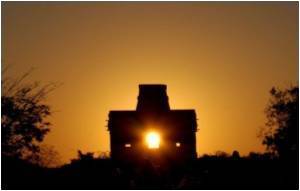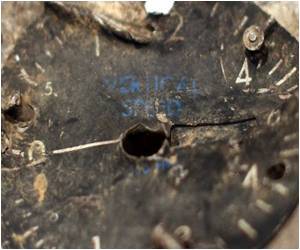Mayan calendar is the most precise and sophisticated calendar ever created, Mayas have also left their mark on the arts, architecture and cooking, say experts.

Millions of tourists are expected in the region on Friday to celebrate with fireworks, concerts and other spectacles held at more than three dozen archeological sites.
"The Mayan calendar is not just a matter of counting seconds, minutes and hours," Guatemalan anthropologist Alvaro Pop, a member of the United Nations Permanent Forum on Indigenous Issues, told AFP.
The calendar also represents a model showing "the movements of celestial bodies and the way it affects human life in a cyclical manner," Pop explained.
That expertise enabled the ancient civilization to detect the influence of celestial bodies on tides, births and plants, he noted.
But the contributions of the ancient civilization -- which reached its peak between the years 250 and 900 -- far transcend their understanding of the stars, touching on everything from architecture to textiles to food.
Advertisement
The Mayas were also among the first to use and grow cocoa and, according to some, they came up with the idea of chewing chicle, a natural gum from a regional tropical evergreen tree and the precursor to chewing gum.
Advertisement
Their civilization is also noted for the only known fully developed written language of the pre-Columbian Americas.
In total, the Mayas spoke 36 languages throughout their history and in different regions. Many of these, which feature very elaborate grammatical structures, are still spoken in indigenous communities.
The Popol Vuh, the Mayan holy book, is the most concrete example of that rich linguistic heritage. The mythological book explains the creation of the world, particularly of the Quiche people, one of the many Mayan ethnic groups.
According to Costa Rican anthropologist Ana Cecilia Arias, Mayan architects, who built imposing pyramids, and their descendants also made significant contributions, notably by helping design churches in the region.
Today the ruins of major urban and religious centers such as Chichen Itza in Mexico's Yucatan peninsula, Tikal in Guatemala, Copan in Honduras and Tazumal in El Salvador stand as shining examples of Mayan architectural knowhow.
Perhaps the more important legacy of the Mayas is human -- millions of ethnic Mayan descendants today live in central America, mainly in Guatemala and Mexico.
Most try to maintain the customs and traditions inherited from their illustrious ancestors even though they are often mired in poverty and face social exclusion.
Source-AFP









